How to alter a pattern to fit your cup size FBA/SBA
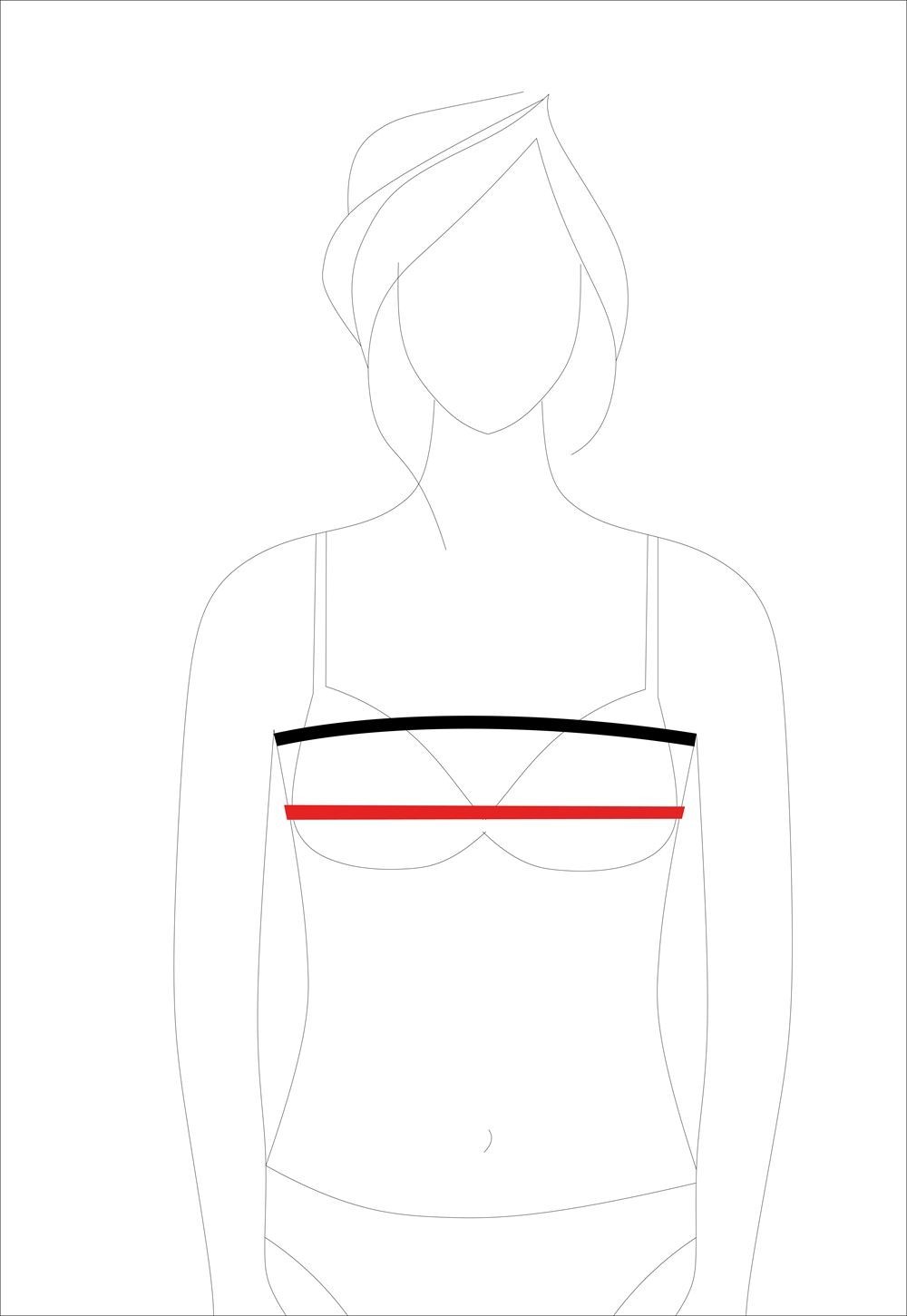
Ready to sew's patterns are drafted for a A/B cup so if you differ from that, you might need to do a bust adjustment. If you are a C cup you might be ok, but follow the steps below on measuring your high bust to work it out.
![]()
What is a bust adjustment?
A Full bust adjustment will create more space and ease at the front of the top only, which is done by increasing the size of the dart. It means instead of increasing the circumference of the top all the way around to accommodate the bust (which will make the armholes too big) it just adds more space at the front for the bust. We want to add more fabric so there is enough space for the fabric to go up and over the bust and also around the bust. A small bust adjustment will do the opposite. It decreases the amount of excess fabric over the bust by reducing the size of the dart.
What size should I pick?
Perhaps you have already made the garment and it fits you nicely over the shoulders, neckline, armholes but it is too tight over the bust and it looks like it is squashing your bust, you have draglines between the busts or you have coming from the bust into the side seams. With that situation, you are going to want to stitck to the pattern size you have already made but you are going to do an FBA to give you more space right over the bust area.
If you think you need to do a bust adjustment but you don't know what pattern size to pick first then you need take two measurements:
- - The upper bust: This is the area of your chest right below your underarm.
- - The full bust : This should be around your ribcage and over your bust apex, parallel to the ground.
If the difference between your high bust measurement and full bust measurement is more than 5 cm (2 inches), then it will confirm that you need to do an adjustment.
- 2,5 cm (1″) is a A cup
- 5 cm (2″) is a B cup
- 7,5 cm (3″) is a C cup
- 10 cm (4'') is a D cup
- 12,5 cm (5'') is DD cup
Again, don’t worry if this is very different from your actual bra cup size! Choose your pattern size based on your high bust measurement + 5 cm (2'') because the pattern is already drafted for a B cup.
![]() Ex: Hight bust measurement= 87cm - Full bust measurement= 95 cm - Cup size= C
Ex: Hight bust measurement= 87cm - Full bust measurement= 95 cm - Cup size= C
- - Hight bust measurement + 5 cm (87 cm + 5 cm) = 92 cm you will choose 40 in Ready to sew' size chart.
- - Full bust measurement - 92 cm (95 cm - 92 cm) = 3 cm, this is the amount you have to adjust the pattern by.
As you are working on half of the front bodice you need to half 3 cm, which gives 1,5 cm. This is how much you will adjust the pattern piece by, we call that the bust differential. The following steps apply if you were doing a small bust adjustment too. I will use the pattern Jily as an exemple for this tutorial.
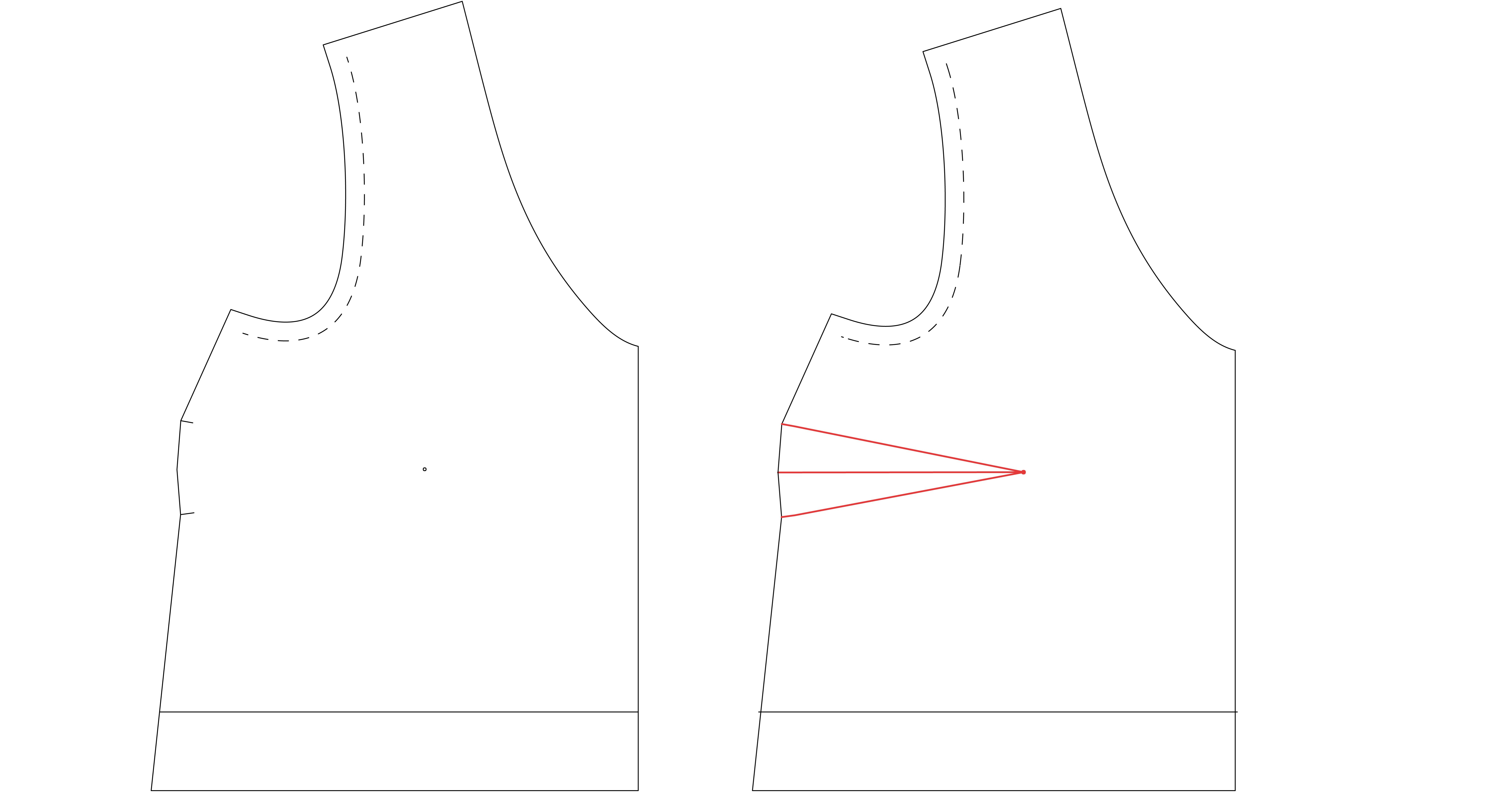
Step 1
- Prepare your pattern by tracing the front bodice, transferring all darts, notches, and markings. Also mark the sewing line at the armscye.
- Trace your bust dart.
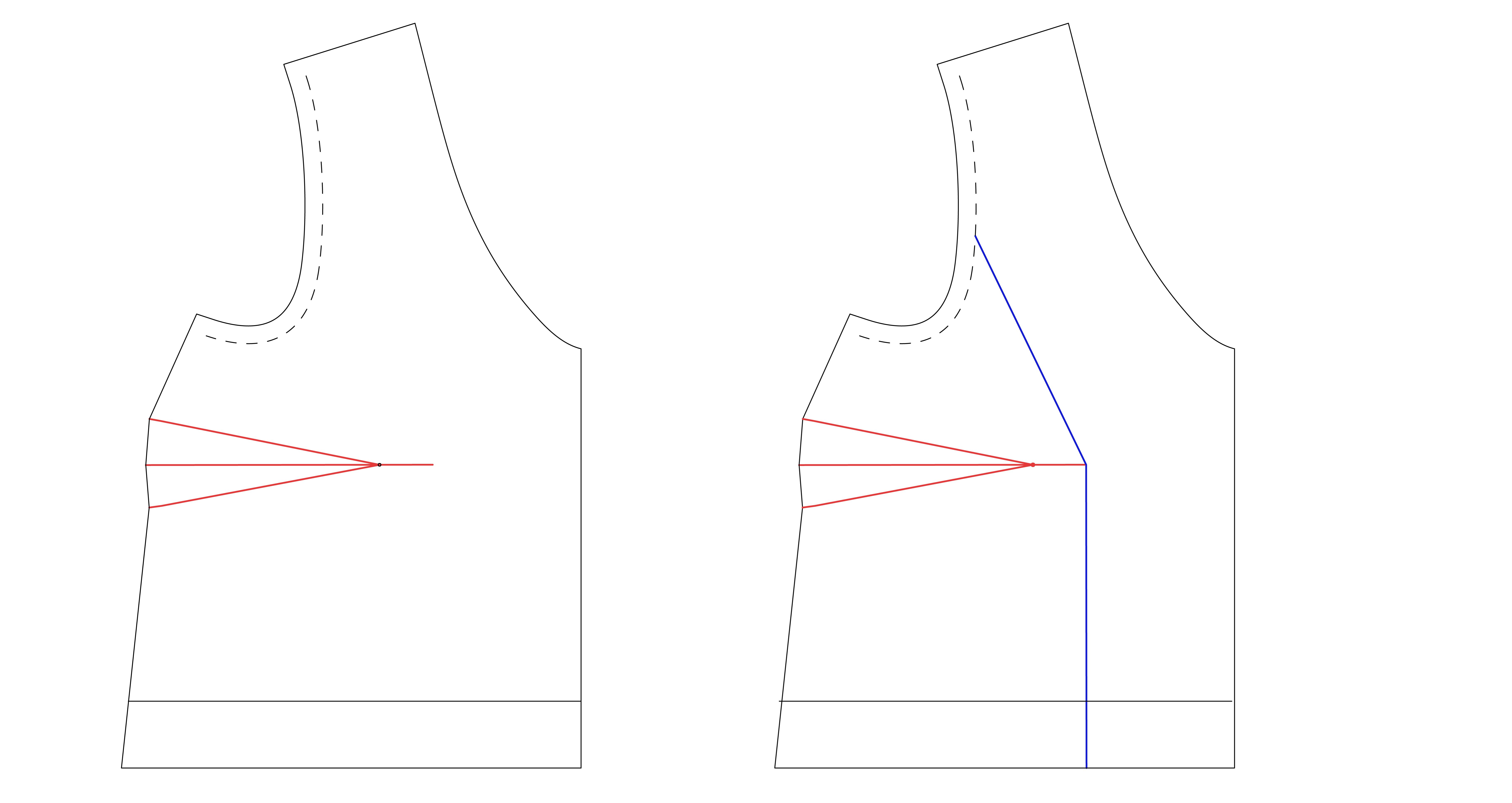
Step 2
- Extend the central line of your bust dart by 3 cm.
- Draw a line from the bust point to the hem of the top. This line should be parallel to the grainline.
- Draw a third line from the bust point to the armscye sewing line (at roughly the center point).
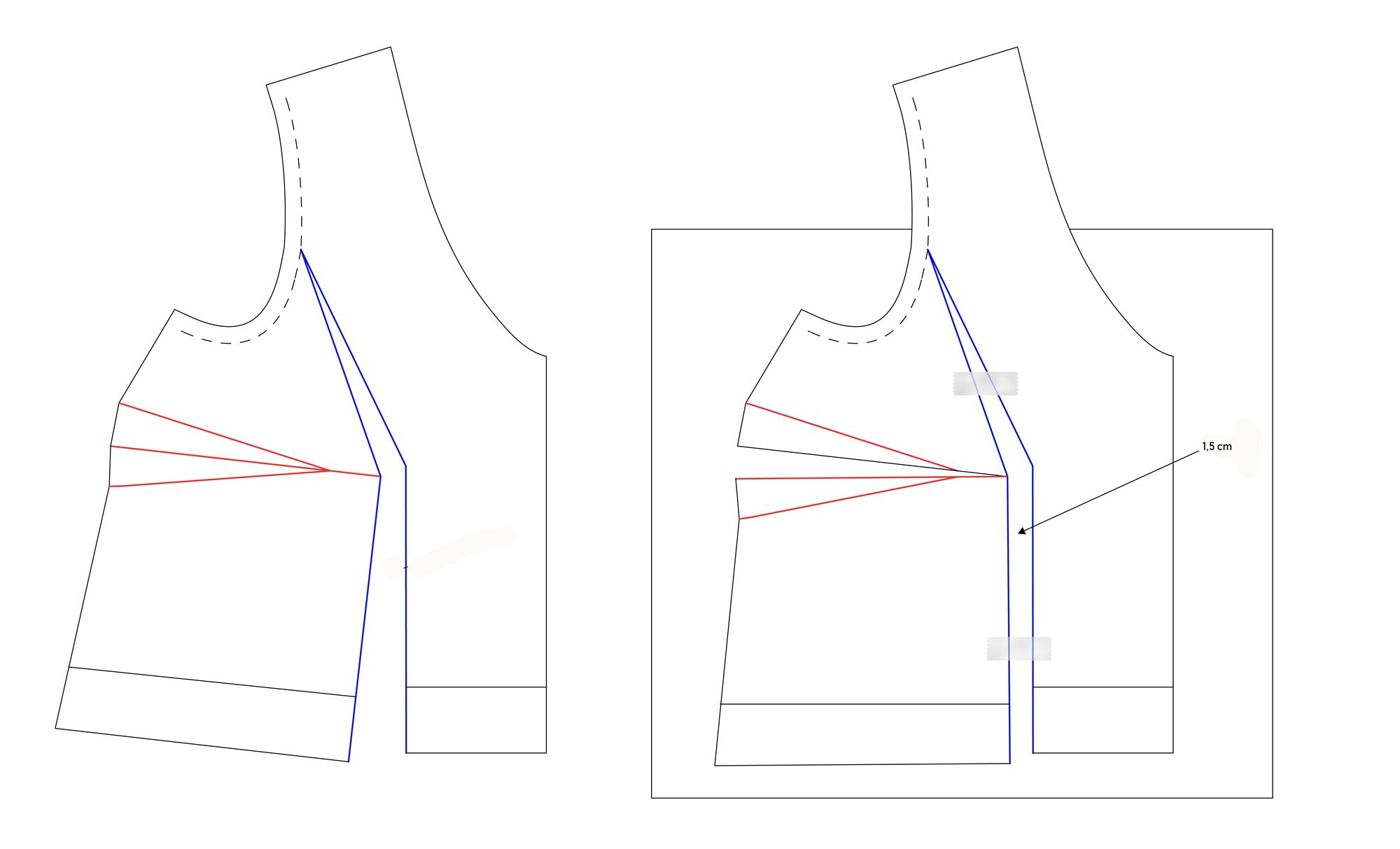 Step 3
Step 3
- Cut through the blue line.
- Cut through the red line starting at the side seam, leaving a small paper hinge at the bust point.
- Now the pattern is slashed and ready to be opened up the desired amount (bust differential).
- The hinge that you created at the side dart should allow you to maneuver your blue lines so that they lay parallel.
- Spread the side part of the bodice away from the centre and measure the distance between the two edges of the vertical line you cut. Make it the same amount that you had to increase your bust measurement by.
- Carefully tape down your pattern to another sheet of paper.
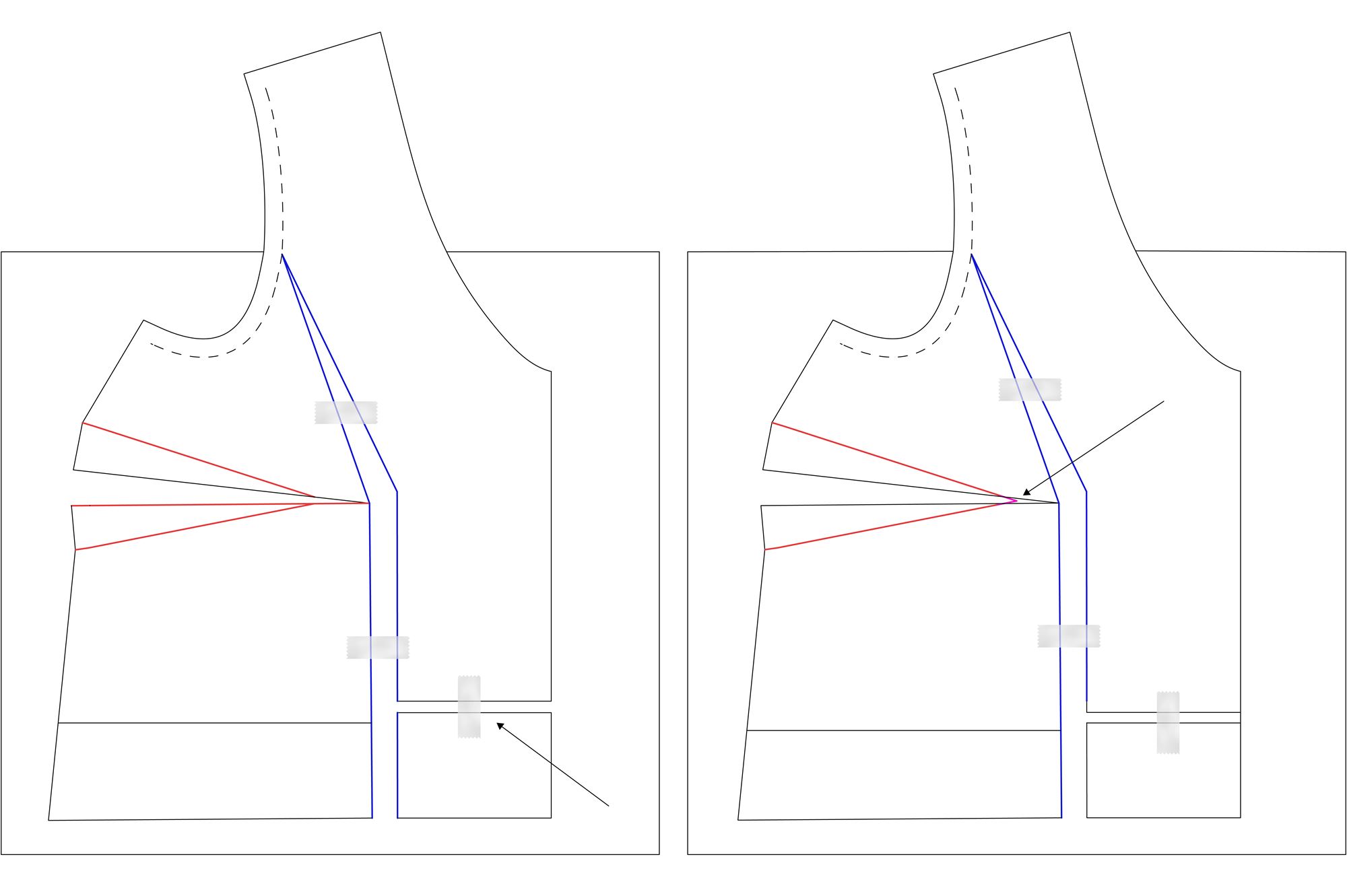 Step 4
Step 4
- Use the lengthen/shorten line on the center front to lengthen the center front so that the hem aligns with the side front.
- Redraw dart legs by extending the existing dart lines to meet.
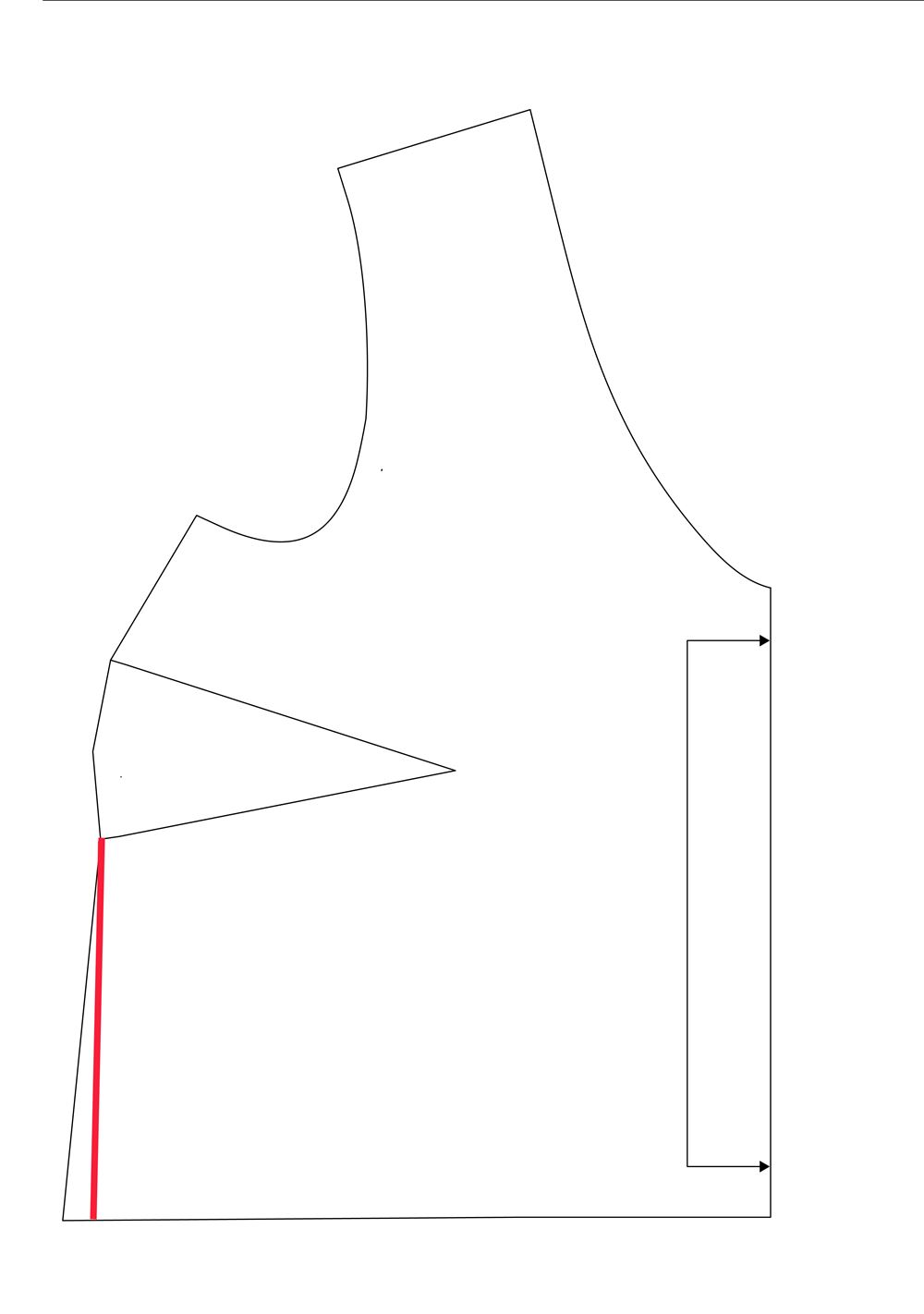 Step 5
Step 5
- You will notice that we have added width to the waistline, if you want to get rid of that width, trace a line from the bottom of the dart to the original side waistline. If you are making the Jily top you can keep that width and adjust the bottom of the pattern (step 6).
- Trace your pattern on a new sheet and transfer all notches.
- Don't forget to label this new pattern piece so you won't forget the adjustments you've made. It can be something like (FBA = total 3 cm).
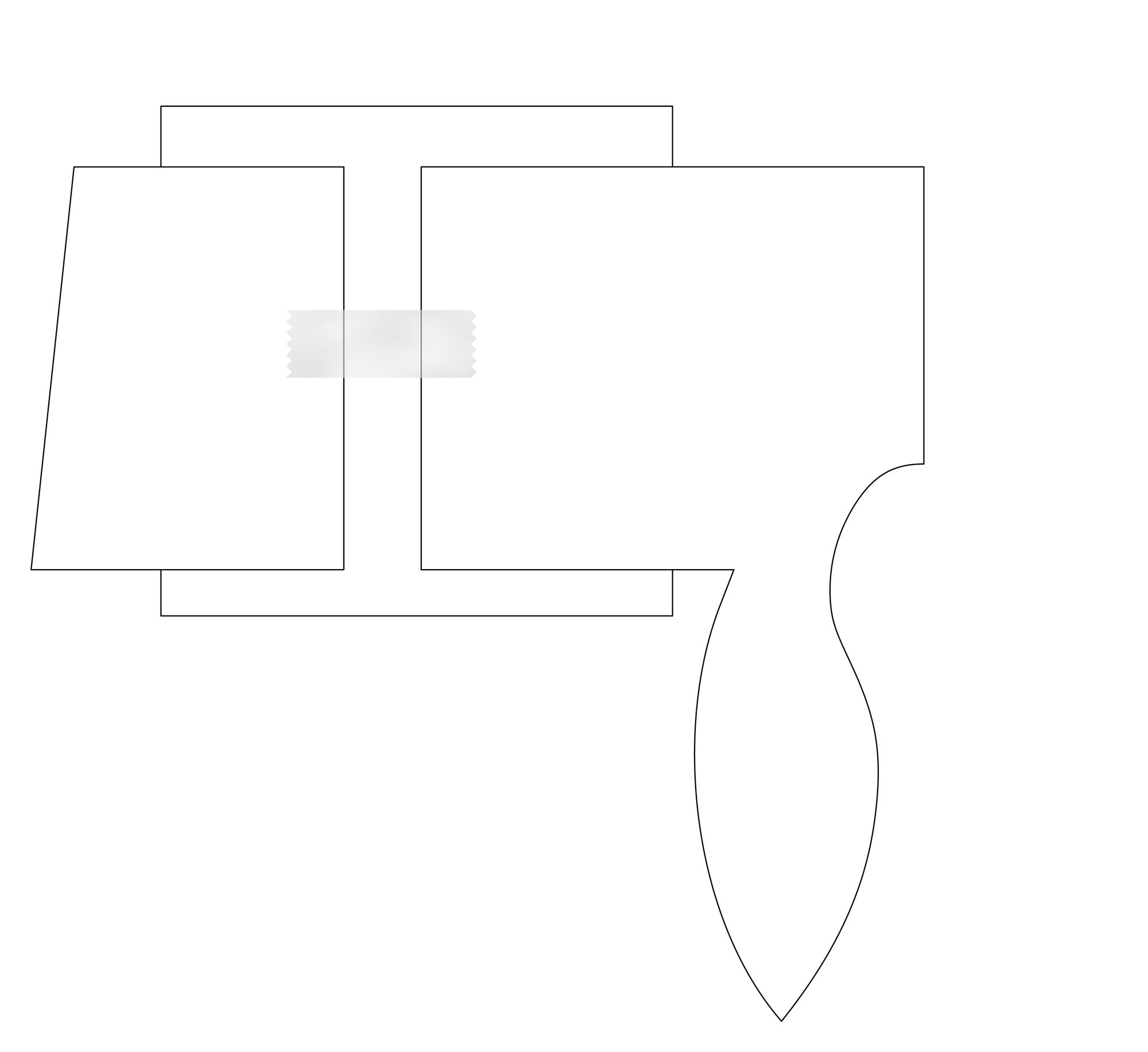 Step 6
Step 6
- If you're working on the pattern Jily, you will nedd to adjust the front hem band width and trace a new facing.
- Measure the width of the bottom of the front bodice and adjust the bottom band according to it.
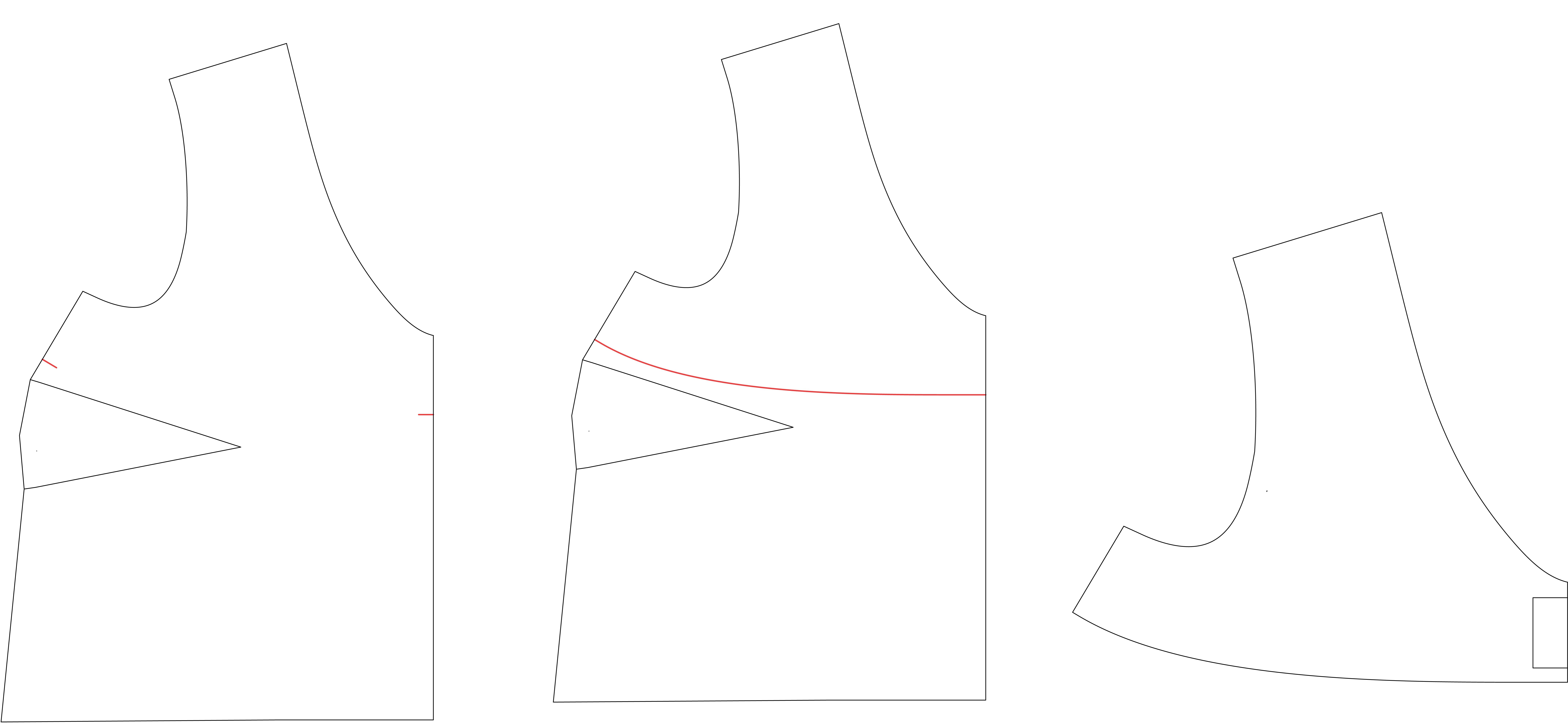 Step 7
Step 7
- Draw your new front facing using some tracing paper. In order to do this, measure down 5 cm on the center front, and 5 cm on the side seam, and connect the two using a shape as shown below.
- Copy all the markings from your original pattern to your facing pattern.
- You now have your new front bodice pattern piece, ready for toiling to check the fit.
![]()
NOTE: If you want to lower the bust dart, follow this tutorial. If you need to make a SBA (small bust adjustment) instead of spreading the pattern, overlap it by the amount you need to reduce by, this will make the size of the dart smaller.
![]()
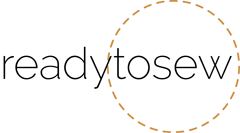
merci pour votre réponse!
je viens de faire la modification du patron, mes mesures sont
tour de p : 76,5
tour dessus de p. : 74
du coup j'ai effectué la modification, 2,5....1,25 de rentré c'est mieux, mais ma nouvelle toile n'est toujours pas convaincante...j'ai descendu les pinces obtenues de 1,5 cm, mais ça rebique...pourtant les pinces sont au bon endroit. maintenant il semblerait qu'il faut que je rabotte les cotés...mais normalement Jily se porte un peu ample...je suis perdue, j'aime pourtant beaucoup cette création que vous avez fait, et j'aimerais énormément pouvoir le porter! je vais reverifier ma modification pour être sure que je ne me suis pas plantée quelque part!
J'ai regardé le tuto en anglais, c'est peut-être ma solution, mais je n'ai pas bien compris comment m'y prendre...je vais chercher si je trouve une source en français..
En ce qui concerne l'étape 2, le prolongement de 3 cm vous donne l'emplacement de la pointe de sein. La pointe d'une pince poitrine sur un patron du commerce s'arrête avant la pointe de sein pour une question esthétique, cependant, quand on modifie une pince poitrine il faut retracer la pince de base, celle qui va jusqu'à la pointe présumée du sein.
J'ai l'impression que ce que vous souhaitez c'est plutôt supprimer la pince poitrine mais garder la même aisance au niveau du tour de poitrine. Effectivement une pince poitrine n'est ni esthétique ni forcément nécessaire sur une petite poitrine. Je n'ai pas de tutoriel disponible à ce sujet mais je suis sûre que vous allez trouver votre bonheur sur la toile en essayant "supprimer pince poitrine" ou bien " removing bust darts".
Très belle journée,
Raphaëlle
Je suis en train d'essayer de réduire les pinces de poitrine, car j'ai une toute petite poitrine, en suivant ton tuto. Mais je me heurte à quelques obstacles :
Par exemple, étape 2, tu prolonges la ligne centrale de la pince poitrine de 3cm. Pourquoi 3, et comment adapter ça à une diminution de la pince ?
Je n'arrive pas non plus à récupérer la bonne longueur de côté (pour correspondre avec le dos).
Bref, je galère. Peux-tu m'aider ?
Merci.
Par exemple à l'étape 2, tu prolonges la ligne centrale de la pince poitrine de 3cm. Pourquoi 3, et comment doit-on faire lorsqu'on veut diminuer la pince poitrine ?
Ensuite comment faire pour récupérer sa largueur de taille de base ?
Si tu pouvais m'aider, je serais ravie...
Merci
Je comprends votre déception, je vais essayer de vous aider. J'imagine d'après votre message et vos mesures que vous êtes menue avec un bonnet A. Vous avez choisi le patron en fonction de votre tour de poitrine mais sans prendre en compte que le patron est pensé pour un bonnet B.
Passez sur la taille 34 et effectuez un ajustement petite poitrine (faites l'inverse de l'ajustement forte poitrine, au lieu d'espacez les morceaux, superposez-les).
Le mieux serait peut-être même d'enlever les pinces poitrines si elles ne sont pas nécessaires. Je n'ai pas de tutoriel disponible à ce sujet mais il y a un très bon tutoriel en ligne en anglais ici : https://www.mariadenmark.com/2014/10/removing-bust-darts/
Très bonne couture!
Raphaëlle
comment faire?
Premièrement, il vous faudra faire un ajustement forte poitrine en suivant l'article ci-dessus étape par étape. En effet, les patrons Ready to sew sont pensés pour un bonnet B, vous avez donc besoin d'un petit ajustement. Il est possible que cet ajustement suffise à régler le problème de la pince trop haute. Si vous suivez l'étape 5 de cet article vous verrez qu'il n'est pas forcément nécessaire de modifier la circonférence de la basque, particulièrement pour un petit ajustement comme le votre. Je vous invite à relire l'article depuis le début pour bien comprendre cet ajustement. Très bonne couture, Raphaëlle
Plus votre bonnet est éloigné du bonnet de base du patron plus cela complexifie l'ajustement. Ce n'est pas impossible du tout, cependant, la toile pour vérifier l'ajustement et faire des éventuelles corrections sera inévitable ;-) Bonne couture !